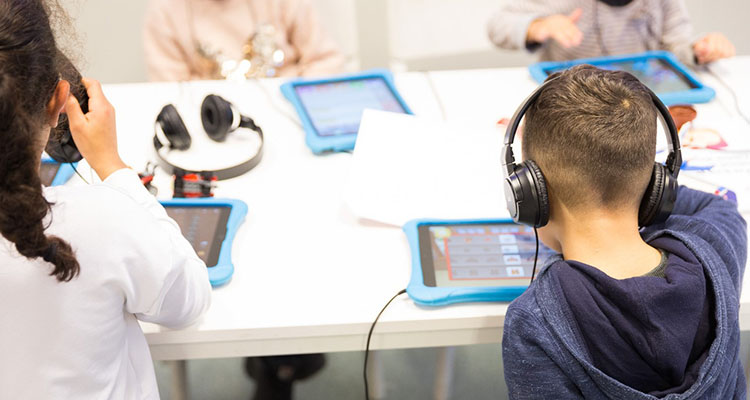
Six solutions to close the digital divide

Making an appointment with a doctor, going on furlough, applying for a school place for your children, asking your local authority for a certificate, and the list goes on – increasingly, digital methods are the favoured way of accessing a whole host of services.
The three causes of the digital divide
Not all Belgians are equipped to adjust to this change in our society. That’s either because they don’t have the skills required, they lack resources – 1 in 10 low-income households doesn’t have an internet connection at home – or they’re simply afraid of it.
According to the most recent studies, the groups most affected by the digital divide consist of poor, less-educated, elderly, young and disabled people. We want to help them.
24 organisations uniting to combat digital exclusion
The Covid-19 crisis and the resulting lockdowns have widened the digital divide.
At BNP Paribas Fortis, we took the view that it was time to take action and so in late 2020, in conjunction with Co.Station, we set up Belgium’s first ecosystem for combating digital exclusion. In mid-November, six social organisations, seven government agencies and eleven companies from various sectors – including ourselves – joined forces to find ways of eradicating this problem.
The six solutions
So far, the members of our Digital Inclusion Ecosystem have identified six potential ways forward:
- Launch a major awareness campaign in the media, so that everyone realises the scale of the problem that the digital divide represents. The campaign will also include a mobilisation aspect so that members of the public can collect funds for social organisations working in the field of digital inclusion.
- Create a platform for supporting organisations that are already working to promote digital inclusion among disadvantaged people. We aim to create a community that will enable these organisations to talk to each other, share best practice, seek help and find volunteers and partners.
- Create a ‘mobile box’ for the organisations concerned. This box – easily transportable and containing IT hardware, an internet connection and support materials – will allow organisations to provide their target audience with more effective support in achieving digital autonomy.
- Creating the role of digital inclusion officer within local authorities: the officer will be a central contact point, tasked with building momentum around digital inclusion, raising the profile of existing initiatives and so on. As part of the ecosystem, a desk will also be set up in a public space, staffed by volunteers committed to combating digital exclusion at the local level.
- Develop an index or national standard that assigns a digital inclusion score to public- and private-sector organisations. The aim is to encourage them to achieve accreditation by gearing their tools and processes to the needs of the digitally vulnerable. Best practices will be rewarded by means of an annual award.
- Use television to reach the maximum number of people and encourage them to take their first steps towards digital autonomy. TV broadcasts will also link to a web page in which users, by entering their postcode, can obtain an overview of the various digital courses and support in their neighbourhood.
The 24 organisations taking part in the ecosystem will soon be welcoming more members, and they will work closely together in the coming months to implement these six solutions.
Want to know more?
To find out which organisations are taking part in our Digital Inclusion Ecosystem, or simply to find out more about it, you can read the press release and the document regarding the six solutions proposed.
Helping everyone to adapt to the digital shift in our society: another example of Positive Banking.